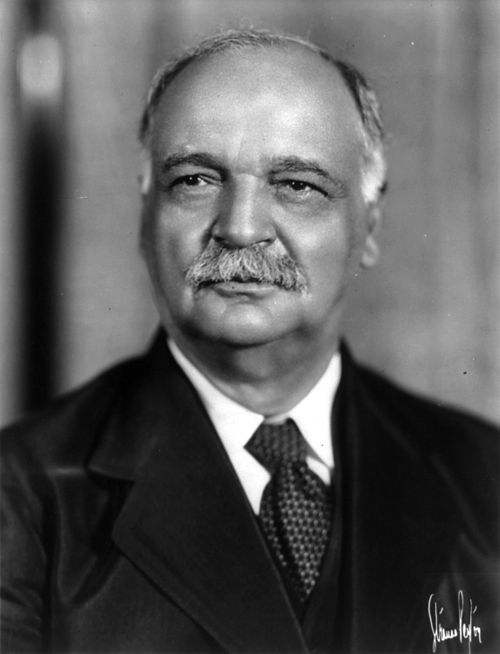Facts for Kids
Charles Curtis was the first Native American Vice President of the United States, serving under Herbert Hoover from 1929 to 1933.
Overview
Fun Facts
Personal Life
Vice Presidency
Political Career
Legacy And Impact
Historical Context
Early Life And Education
Controversies And Criticisms
Key Legislation And Policies

Inside this Article
Vice President Of The United States
Great Depression
Vice President
United States
European
Culture
People
Indian
Land
Time
Did you know?
🎓 Charles Curtis was the first Native American to serve as Vice President of the United States.
📅 He served under President Herbert Hoover from 1929 to 1933.
🏛️ Curtis was a member of the Republican Party and held various political positions throughout his career.
⚖️ He was the longest-serving U.S. Senator from Kansas, holding office from 1907 to 1913 and again from 1919 to 1929.
💼 Before his vice presidency, Curtis held the position of Senate Majority Leader.
🌎 He was born on January 25, 1860, in Topeka, Kansas, and was a member of the Kaw Nation.
📜 Curtis was known for his advocacy for Native American rights during his political career.
🏆 He was a delegate to the 1960 Republican National Convention.
🚀 Charles Curtis was one of the architects of the early New Deal policies.
⏳ He passed away on February 8, 1936, in Washington, D.C.
Introduction
He became the 31st Vice President of the United States, serving alongside President Herbert Hoover from 1929 to 1933. Curtis was a member of the Kaw Nation, making him the first person with Native American ancestry to become Vice President! 🇺🇸 His work in politics helped shape laws and policies during a significant time in U.S. history, especially during the Great Depression.
Fun Facts
He even played the sport as a young boy! Another fun fact is that he was known for wearing stylish hats. 🎩
He was quite the fashionable vice president! Curtis was also the first person to make a ceremonial flight in a military aircraft while serving as Vice President. Finally, he was deeply connected to his Kaw heritage and spoke about the importance of preserving Native American culture throughout his life. 🌿
Personal Life
👩👧👧 Curtis loved spending time with his family and often took them on trips to learn more about Native American culture. He was an avid sportsman, enjoying hunting and fishing in his free time. 🎣
Curtis's background allowed him to connect with different cultures, and he valued friendship and respect, both personally and professionally.
Vice Presidency
️ His term lasted until 1933, during a tough time known as the Great Depression. Many people were struggling, and Curtis worked to support Hoover's efforts to help the country recover. Together, they faced challenges like unemployment and farming issues. While he may not have been the most famous Vice President, Curtis played an essential role in supporting the government during this difficult period. 📉
Political Career
️ He quickly became known for his strong leadership and legal skills. Later, he was elected to the U.S. House of Representatives in 1907 and served for over a decade. In 1921, Curtis became a U.S. Senator, representing Kansas until 1929. During his time in the Senate, he worked on issues like agriculture and Indian affairs, helping improve the lives of many Americans. 🌾👥
Legacy And Impact
His work helped improve the rights of Native Americans and highlighted the importance of agriculture in the United States. Today, many people remember Curtis for his role in representing diverse communities and pushing for change during difficult times. 🌠
Historical Context
The 1920s brought economic growth, but the Great Depression followed, impacting millions of Americans. President Hoover and Curtis tried to address these changes through various policies. The 1930s were also a time of social and cultural change, as people began to fight for equal rights and work together to create solutions to the problems they faced. Curtis’s role reflected these important changes in the nation.
Early Life And Education
Growing up in Kansas, Curtis learned about his Native American culture and traditions. He attended local schools but had to leave at age 15 to help support his family. 🏫
Despite this, he was determined to learn and became a lawyer through self-study. His diverse background and experiences influenced his later work in politics.
Controversies And Criticisms
️ They believed he could have done more to help Indigenous peoples. Critics also argued that Curtis supported economic policies that favored business and agriculture over the needs of ordinary people during the Great Depression. Nonetheless, his unique background added a significant voice to the political landscape of his time. 📢
Key Legislation And Policies
This legislation helped restore some tribal self-governance and stop the allotment of Native American lands to non-Natives. Curtis's efforts in agriculture helped farmers also, especially during the economic struggles in the 1920s and 1930s. He believed in the importance of supporting rural communities. 🌽
Charles Curtis Quiz
Frequently Asked Questions
Our Mission
To create a safe space for kid creators worldwide!
2025, URSOR LIMITED. All rights reserved. DIY is in no way affiliated with Minecraft™, Mojang, Microsoft, Roblox™ or YouTube. LEGO® is a trademark of the LEGO® Group which does not sponsor, endorse or authorize this website or event. Made with love in San Francisco.

